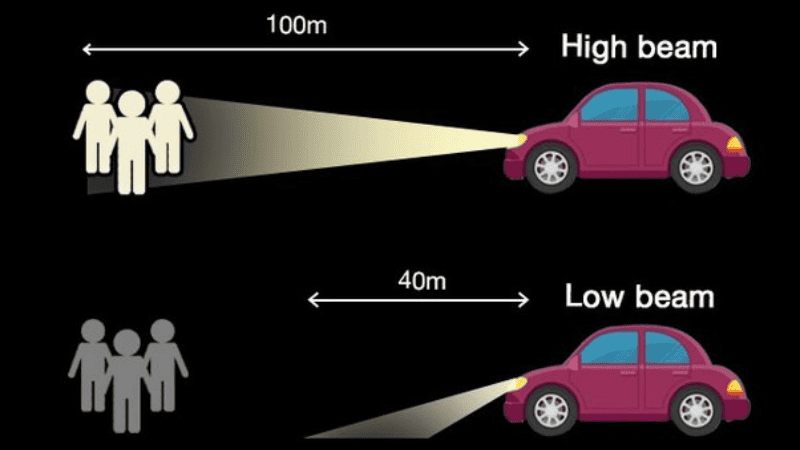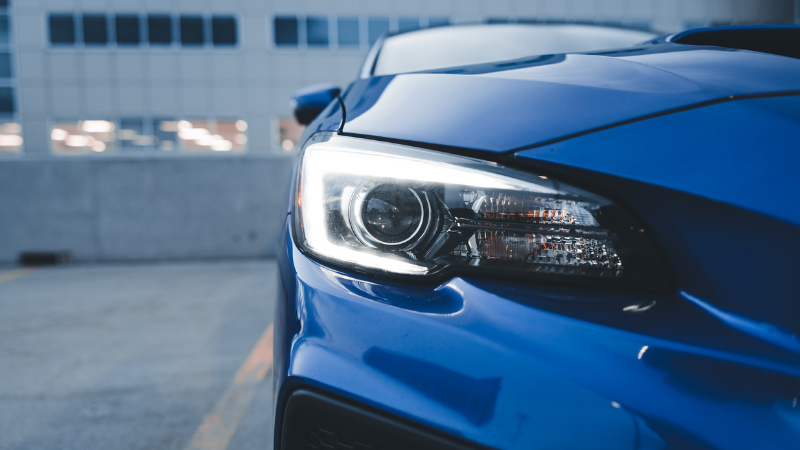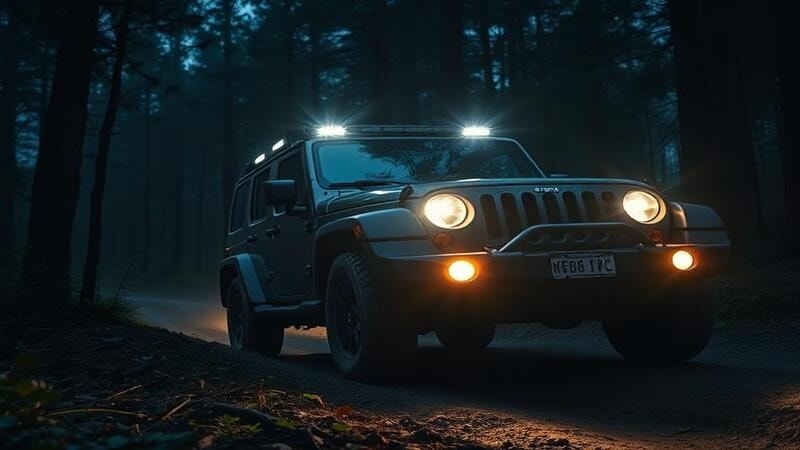The ability to switch between low beams and high beams has been a feature of automotive headlights since the 1910s. After more than 100 years, many drivers still struggle to properly use this feature.
These two headlight settings are both used at night, but the conditions in which they are used are quite different. Using the wrong setting may even contribute to an accident.
In this article, we will examine the differences between these two headlight settings, where either should be used, and how we can ensure we switch to the correct setting when driving in conditions with poor visibility. Find out more below.
Low Beam Headlights
The main characteristic of low-beam lights is that they cover the shortest distance of the two when activated. This setting is also known as the dipped beam, meeting beam, or passing beam.
The standard low beam setting should provide illumination for about 160 feet, but the low beam headlights in many cars extend much further today. It also spreads the light over a wider distance at the sides of the car.
Purpose and Design

The purpose of low-beam headlights is to offer adequate lighting at the front of the vehicle and the sides of the road in standard driving conditions without blinding other drivers. It is intended to be the default headlight setting when driving through fairly busy roads.
Beam Pattern
There are two main beam patterns for low-beam lights. The UN ECE standard is used in all countries except the United States and Canada, which use the FMVSS/CMVSS standards. Both standards specify an asymmetric cut-off to limit glare while adequately illuminating the sides of the road.
The UN ECE standard specifies that half of the beam on the side of oncoming traffic should have a low and flat cut-off. The other half of the beam should slope upwards starting from the center to the nearest edge of the road.

Similarly, the FMVSS/CMVSS standards specify that half of the beam on the side of oncoming traffic should have a low and flat cut-off but the cut-off is much higher than in the UN ECE standard. Additionally, instead of sloping upwards towards the near side of the road, the other half of the beam also has a flat cut-off that is simply higher than the other half.
The cut-off is a headlight feature that ensures the light beam remains below a certain height. You can easily see this by shining your headlights against a flat wall or garage door from around 25 feet.
Ideal Driving Conditions
The low beam lights should be used in the following driving situations:
- Driving through urban areas: Urban areas will have greater numbers of drivers, riders, and pedestrians who could be blinded by the high beam lights. Urban areas also have lower speed limits, which lower the need to see much further ahead.
- Driving on well-lit roads: Using high beams in well-lit areas doesn’t improve visibility to any significant degree and unnecessarily lowers the energy efficiency of your vehicle.
- Driving behind other motorists: When there is a car ahead of you, your high beams can reflect off their rearview and side mirrors, blinding the driver. Even poorly adjusted low beams will have this effect.
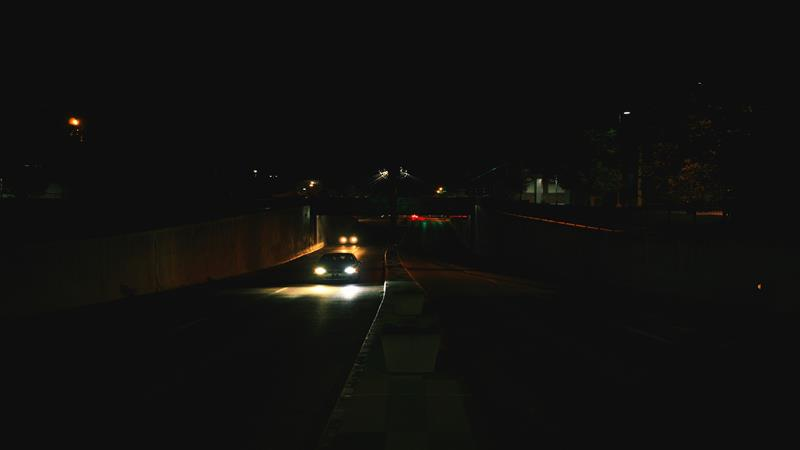
- Meeting oncoming drivers: It’s good practice to switch to low beams when there is an oncoming vehicle even on poorly lit roads. The brighter light from high beams can dazzle an oncoming driver from a great distance.
- Driving through fog, snow, and heavy rain: Low beams make better fog lights than high beams. When used as fog lights, the brighter light from high beams will reflect off water droplets in the air in front of you, making it harder for you to see.
High Beam Headlights
The high beam headlight setting is the most powerful of the two and can illuminate up to 400 feet of the road ahead. It’s also called the main beam, full beam, or driving beam.
The high beam headlights are only suitable when you’re alone on the road as their glare can blind oncoming traffic and the drivers ahead of you.
Purpose and Design
The high beam lights are designed to illuminate a greater distance ahead so drivers can have enough time to react to something on the road. They are intended to be used when you are the only driver on the road and driving at higher speeds or driving through very poorly lit roads.
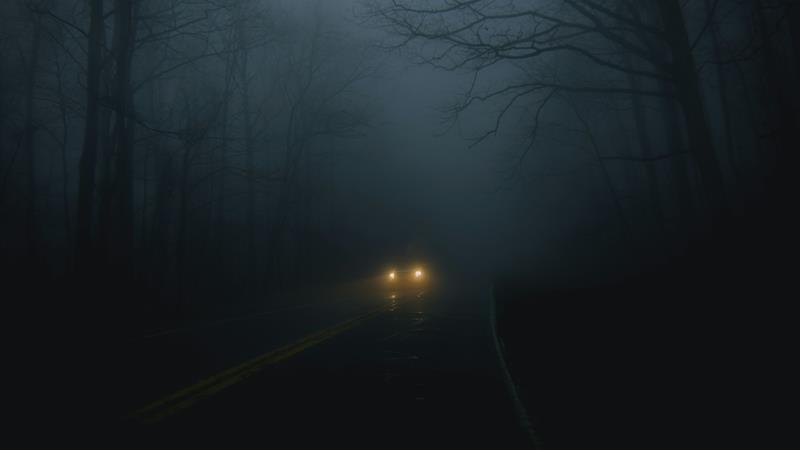
Beam Pattern
The high beam has a light that is focused and extends farther down the road compared to low beams. This is because the beam angle is horizontal and not pointing down toward the ground. The light is also more intense as the high beam puts out more light than the low beam.
High beam provides a narrower field of view and doesn’t light up the near side of the road as well as low beams. The light from high beams is also symmetrical. This means that both the side of oncoming traffic and the near side of the road will be illuminated equally.
Ideal Driving Conditions
High-beam headlights should be used under the following conditions:
- Driving through country roads: Country or rural roads are typically poorly lit and have fewer cars and pedestrians. These roads may also have higher speed limits. These are ideal conditions for using high beams.
- Driving through poorly lit urban streets: Some urban areas will have very poorly lit streets. High beams can be used in such areas but this should be done responsibly.
When using high beams, always be prepared to switch to your low beams when you get within 500 feet of an oncoming car or around 200 feet of a car ahead.
When to Use Low Beam Headlights
Low-beam lights provide a wider, more diffused light that won’t blind oncoming traffic. Low-beam headlights are well-suited for driving in well-lit urban areas. They should also be default options in rainy, foggy, or snowy conditions to limit the glare from light reflecting off of water droplets.

Lastly, low beams are also recommended when driving near other motorists. This means within 500 feet of oncoming cars or when the car in front of you is in the range of 200 to 300 feet.
When to Use High Beam Headlights
Unlike low beams, high beams are angled higher and provide a more intense, wider beam of light to illuminate a larger area in front of the vehicle. High beams should be used when driving on country or rural roads where lighting is poor or absent, especially if your speed exceeds 40 km/h. This makes it easier to spot hazards such as animals, cyclists, and pedestrians early.
They can also be used when driving on highways and poorly lit roads within cities. However, the high beams should be used carefully and you should always be ready to switch to low beams when within range of other drivers. Also be careful using high beams in fog, as the intense light can be reflected to the driver and reduce visibility.
Guidelines for Proper Use of High and Low Beams
The difference between low and high beams is that low beams are used for normal nighttime driving while high beams are used in rural areas or small roads with very little or no light at all. Using your high and low beams correctly makes nighttime driving safer for you and other drivers. Some guidelines you should observe when using these headlight settings are:
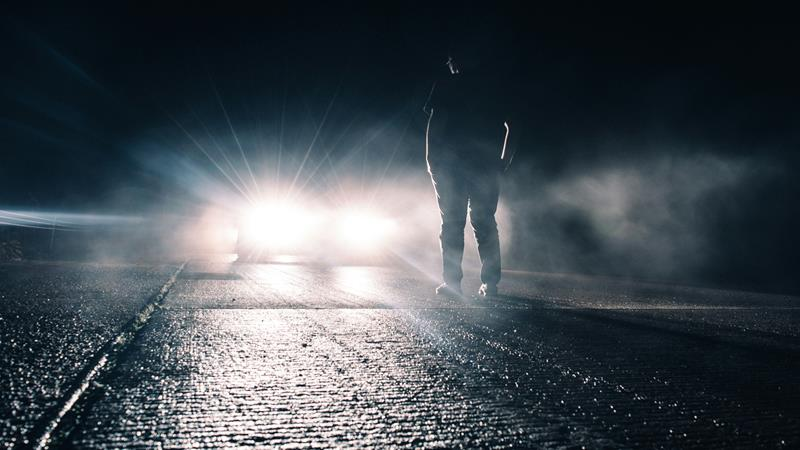
- Use high beams sparingly when driving through busy areas.
- Try to maintain a distance of around 500 feet between your car and others when using high beams.
- Be aware of where other vehicles are on the road.
- Pay attention to weather conditions.
- Make a note of how dark it is outside.
- Keep an eye on your speed and know when to switch to high beams.
- Confirm that your headlights are in the correct setting. The dashboard lights for low beams and high beams are different.
- Ensure your low beams are properly adjusted. Poorly adjusted low beams can still cause glare.
What About Adaptive Headlight Technology?
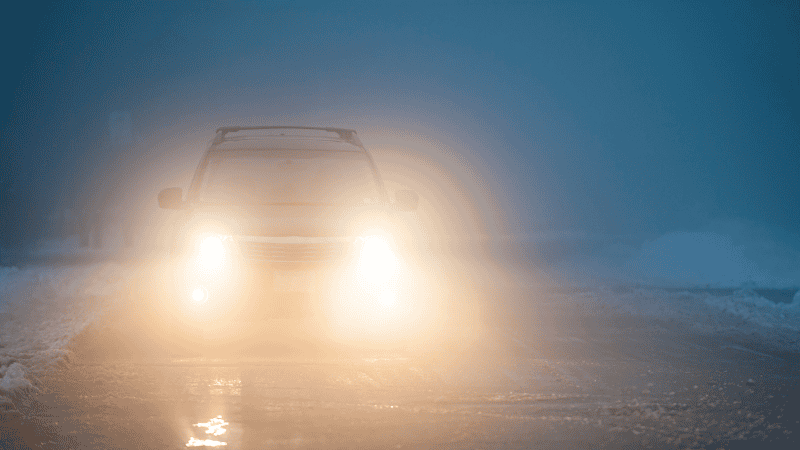
Manufacturers are now fitting adaptive car headlights with automatic high beams that switch between the two settings depending on weather conditions, road conditions, and driving speed.
The cars are fitted with an array of sensors that can detect different conditions. This allows the onboard computers to switch to the correct headlight setting to offer the best illumination in any circumstance.
Adaptive headlight technology will likely be in every car on the road in the future. However, for the time being, most of us will need to learn when and where to manually switch from high beams to low beams.
Conclusion
The ability to switch between high beams and low beams has been around for over 100 years. It has become more important in recent years due to the introduction of brighter headlight bulbs that use LED and HID technology.
Low beams are the default and drivers should ensure they engage these when driving around other cars. High beams are best left to the dark roads in the country and should never be used in fog, snow, or heavy rain.
Get Your Low and High Beam LED Bulbs from Carlightvision
At Carlightvision, we know all about low beams and high beams. We produce LED bulbs that meet different lighting standards and you can also get your pick of single-beam or dual-beam bulbs. Let’s illuminate the road ahead together with innovative, reliable, and high-quality lighting solutions.
Our manufacturing process benefits from years of in-house lighting research experience to ensure our products offer maximum illumination and minimum glare. Visit our website today to find out more. Contact us today right away to get a quote!
